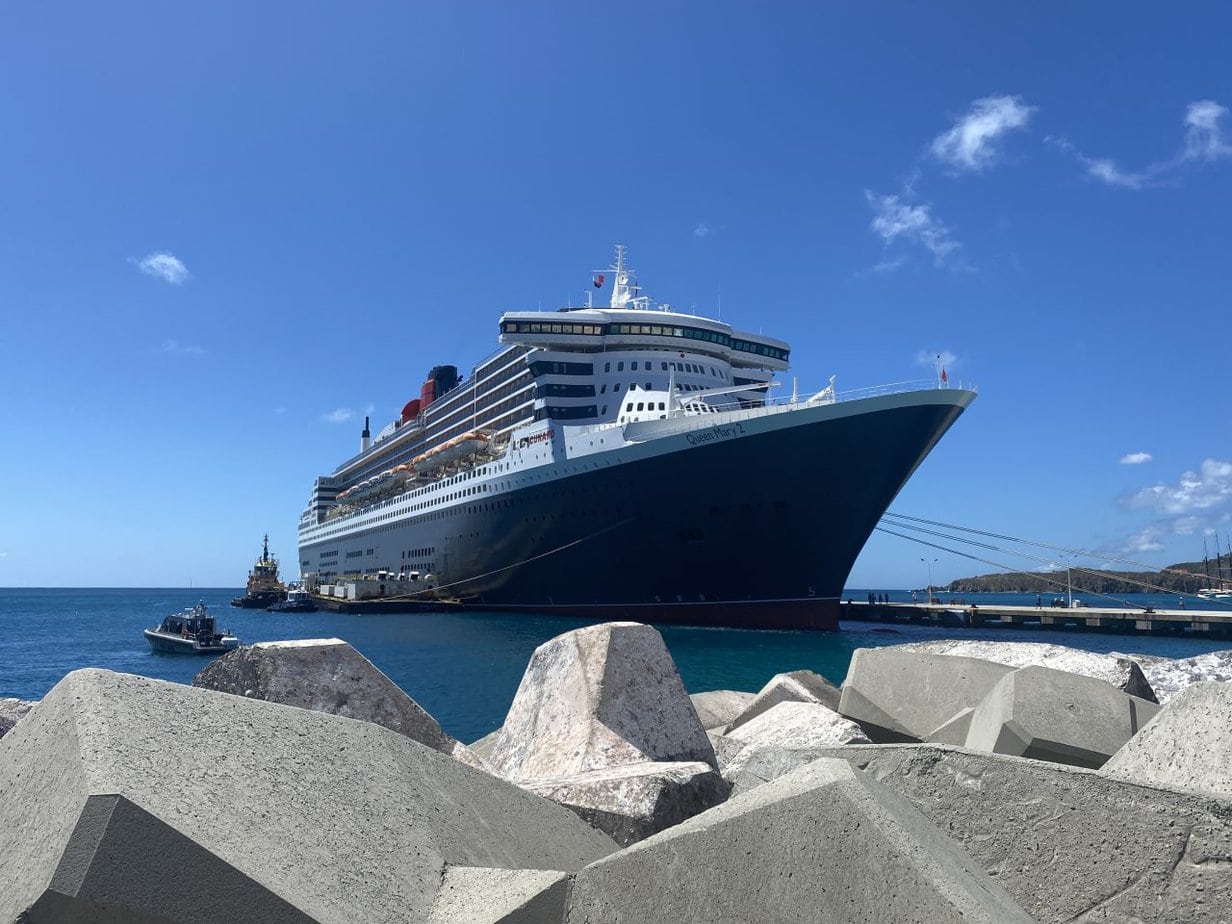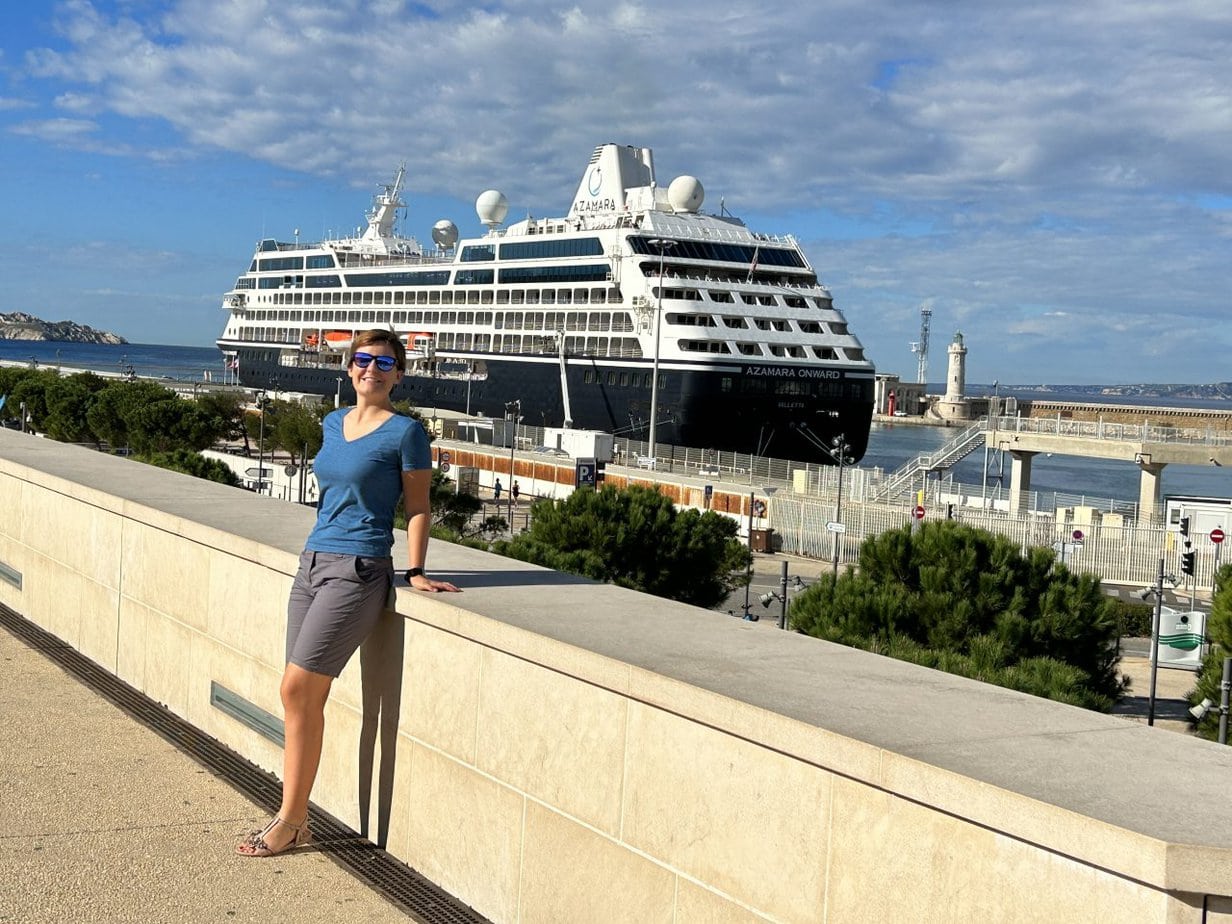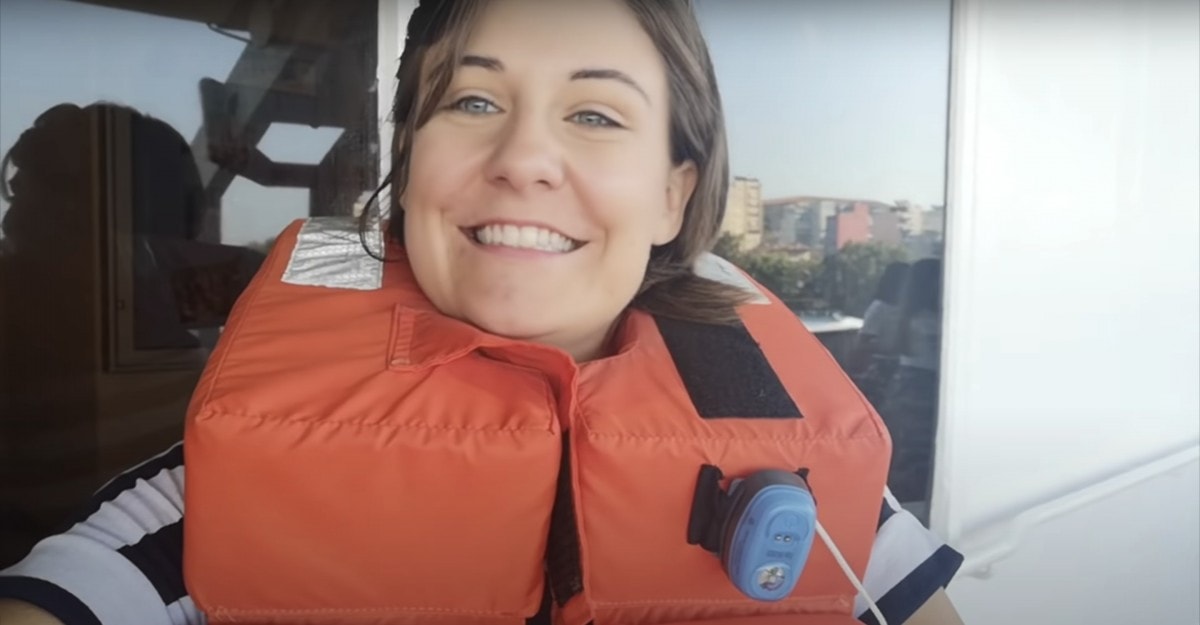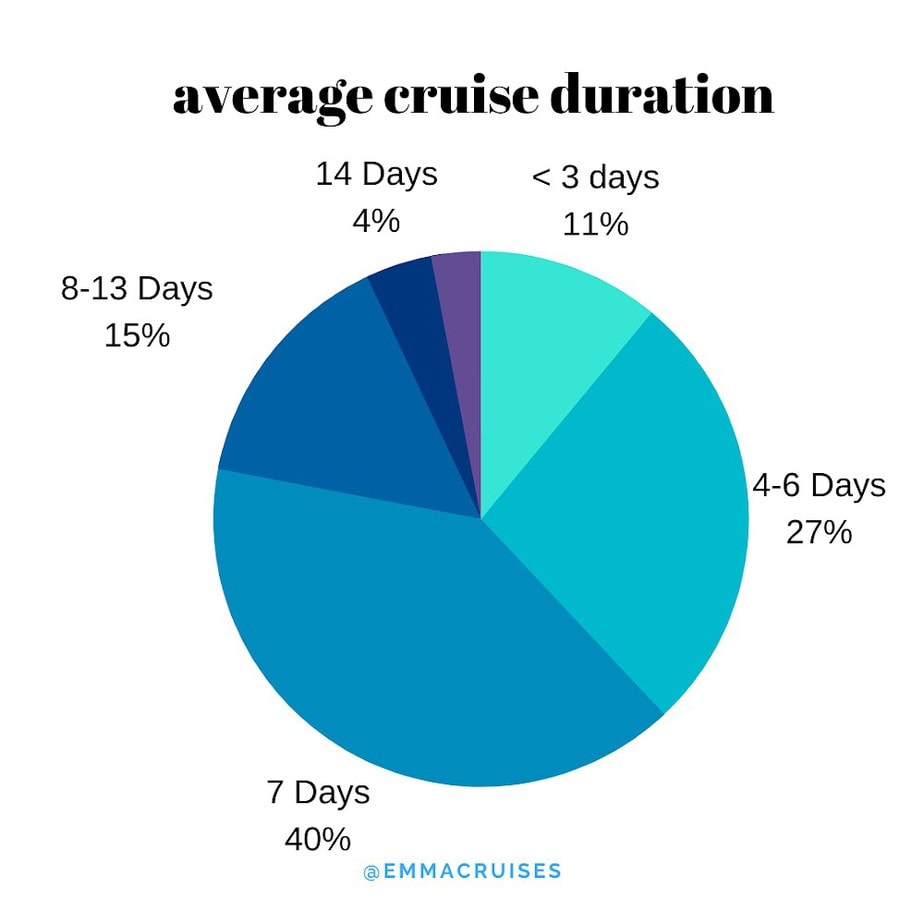If you’ve ever considered taking a cruise you may be wondering how long a cruise ship could stay at sea for without needing to refuel.
It isn’t uncommon for cruise ships to spend a week at sea but a longer period of time is possible.
I’ve been on numerous cruises but haven’t ever been continually at sea for more than four days.

How Long Can a Cruise Ship Stay at Sea For?
Generally speaking, cruise ships can only stay at sea for around twelve days before they need to refuel.
Most cruise ships will refuel every few days as they stop at different ports.
Just because a cruise ship could in theory stay at sea for 12 days, this doesn’t mean that they do!
Cruise ships can sail for days across the Atlantic or Pacific oceans.
When they do this they must make sure that the journey is carefully monitored so that the ship does not run out of fuel.
Repositioning cruises which start and end in different places – such as a Transatlantic or Transpacific cruise – are some of the best value-for-money cruises on the market.
To find out why, and how to find the cheapest cruises, check out this post:
7 Benefits of Repositioning Cruises (Tried & Tested)
In this post, we look at what would happen when a ship runs out of fuel while at sea and how the type of ship affects how long it can be at sea for.

What Affects a Cruise Ships Fuel Usage?
Several different factors can change the length of time a cruise ship can last at sea before needing to refuel:
- Ship size – The size of cruise ships varies dramatically with some holding as little as 100 passengers and others carrying upwards of 6000.
Rather unsurprisingly, bigger cruise ships need to use more fuel! Larger cruise ships do however have the capacity to hold more fuel so this doesn’t mean that bigger ships can’t stay at sea for as long as smaller ships.
- Age of the ship – Generally speaking newer cruise ships are more fuel efficient than older ships.
There are cruise ships from the 80’s and 90’s which are still in operation. They use dramatically more fuel than newer ships.
Even within the same cruise line, there can be big differences. The Norwegian Spirit is one of the oldest ships for Norwegian Cruise Line and she is far less fuel efficient than the newer Norwegian cruise ships like Prima and Viva.
- The average speed of the sailing – Cruise ships can burn through over one thousand gallons of fuel every hour when sailing.
Generally speaking, the faster a cruise ship sails the more fuel it has to use to do that. If a cruise ship is travelling fast to avoid a storm or to reach a destination in a short period of time it’ll use more fuel than if travelling slowly.
To learn more about how, and why, a cruise ship would sail at an increased speed to avoid bad weather, check out this article:
5 Ways Cruise Ships Avoid Bad Weather.
Cruise lines spend on average 8% of your cruise fare on fuel.
Fuel is one of the biggest costs that a cruise line has, so they are always keen to reduce this.
Check out the video below to learn what the other 92% of your cruise fare is spent on.
Cruise Ship Innovation
Many cruise lines are working hard to find new and innovative ways to preserve energy and fuel.
This will allow the cruise lines to go longer between refuelling and simply allow the cruise ship to carry and use less fuel.
Cruise lines are now building ships that run on liquefied natural gas (LNG), producing 25 per cent less carbon dioxide, zero sulphur emissions and up to 95 per cent less nitrogen oxide than conventional fuel.
It has been reported that more than half the new ships on order now will use LNG as their main fuel.
But LNG is still only a stepping stone to the next generation of even greener fuels.
Cruise lines are investing millions into the development of synthetic LNG, Biofuels and Hydrogen Fuel Cells.

Carbon Neutral Cruise Lines
All cruise lines are conscious of their carbon footprint and are seeking to reduce their impact as much as they can.
MSC are the first major cruise line to offset all of their carbon emissions making their cruises carbon neutral.
As time goes on there are expected to be more and more restrictions placed on cruise ships so it’s important that lines invest in new technology in order to future-proof their cruise ships.

MSC Euribia utilises LNG to try and cut its CO₂ emissions by up to 20%, alongside the amount of nitrogen oxide it produces by up to 85%.
Does Cruise Ship Type Affect How Long It Can Stay at Sea?
Different types of cruise ships will be able to sail for different periods of time:
Type Of Ship
- Ocean Cruise Ships – These are the most common type of cruise ship, they offer a wide variety of activities and amenities, onboard.
- If you are considering a cruise on any of the major cruise lines it’s likely that you’ll be cruising on a mainstream cruise ship.
- These cruise ships often have diesel engines that use “heavy fuel oil.” When cruise ships reach a certain size they are often referred to as ‘Mega Ships’ which, rather unsurprisingly, require more fuel.
“Harmony of the Seas” is a Mega Ship and she has two engines which at full power burn about 66,000 gallons a day.
I recently sailed onboard Harmony’s sister ship, Symphony of the Seas. Find out all about that huge Mega Ship here:
- Ocean Liners – Ocean liners are often confused with cruise ships but there are differences.
- Ocean liners are designed to transport guests from point A to point B, whereas cruise ships are designed as more of a leisure activity.
- Ocean lines are designed to travel longer distances and generally can go faster than cruise ships.
- That said, there is only one ocean liner still in operation, Cunard’s Queen Mary 2.
To learn more about Ocean Liners, check out this post:
Cruise Ships vs Ocean Liners: 5 Fundamental Differences
I took a short sailing on Queen Mary 2 to Hamburg. Find out how I got on and what I thought of her here:
- River Cruise Ships – River cruise ships are designed for short cruises and because of their size, they don’t carry as much fuel.
- On the majority of river cruises, you won’t have any ‘river days’ in the same way as you’d have a sea day on an ocean cruise.
- If a river cruise ship was in danger of running out of fuel at any point it would be able to sail towards the shore without too much trouble.
Find out what I thought about my budget River Cruise on Tui Skyla, and whether it offered good value for money here:
It’s very important for a cruise ship to make sure that it has enough fuel to complete its journey, that said, no cruise ship wants to sail with extra fuel onboard.
What Happens If a Cruise Ship Runs Out of Fuel?
Cruise ships are not designed to be able to refuel while they are out at sea and it is incredibly unlikely that a cruise ship would run out of fuel and be unable to find somewhere to dock to refuel.
If this did happen the passengers and crew would have to be evacuated either using lifeboats or by air.
Without fuel, the cruise ship wouldn’t be able to work the toilets, raise the anchor, or do almost anything onboard. It would be very unpleasant and dangerous.
To learn more about how cruise ship toilets work, including what you can’t EVER put down a cruise ship toilet, check out the post below:
Cruise Ship Toilets: What Happens When You Flush? Step by Step Guide
Evacuation
Cruise ships are equipped with lifeboats to ensure the safety of all passengers.
Emergency plans of action are directly set into place if there is an emergency. Crew members and all administrators on board are well versed as to how they need to behave and what needs to be done during situations of crisis.
On every cruise, it is a legal requirement that all guests attend a Muster Drill or carry out a “Virtual Muster” and report to their Muster Station in order to familiarise themselves with the safety procedures onboard.

To learn more about muster drills, including what happens if you don’t attend. Check out this post:
Twelve Days At Sea Is About The Maximum
A cruise ship is capable of remaining at sea without refuelling for around twelve days.
Most ships will never be at sea for this length of time though, with the majority completing journeys of 7-10 days or less.

If a cruise ship did completely run out of fuel at sea the guests would have to be evacuated as soon as possible as this could be very dangerous for all involved.
Before You Go
Find out whether it is best to book your cruise with the cruise line, or use a Travel Agent here:
Find out when is the most popular time of year to cruise below:
Cruise Destinations and Timings (Peak Seasons, Popular Itineraries and Weather)

Free Insiders Cruise Line Guide
Ever wondered how the mainstream cruise lines compare? Cruise lines won’t tell you this, but I will.
This FREE guide shows you everything you need to know to find your perfect cruise line.
